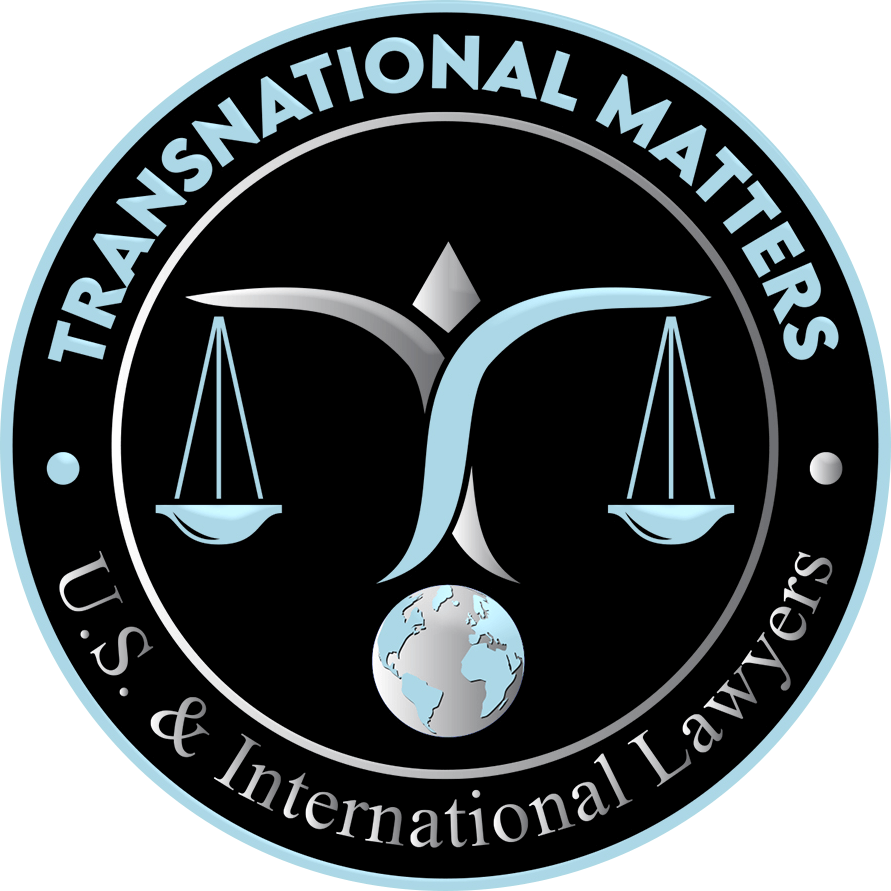Deciphering the 3(a)(10) Exemption in SecuritiesLaw: A Guide to Affiliate and Non-Affiliate Distinctions
In the complex landscape of securitieslaw, understanding the nuances of regulation is vital for any issuer or investor. Section 3(a)(10) of the Securities Act offers an exemption that can be a strategic tool against fraud, permitting certain securities to be exchanged without registration. The division of CorporationFinance plays a pivotal role in interpreting and enforcing these regulations, ensuring that information disseminated to the public maintains integrity. This article provides insights into the refined distinctions between affiliate and non-affiliate statuses in the context of 3(a)(10) exemption, setting the stage for informed decision-making for CEOs and investors. Keep reading for a comprehensive examination of the exemption’s requirements and its implications on the resale of securities.
Key Takeaways
- Section 3(a)(10) exemption allows debt-to-equity conversions under strict regulatory scrutiny
- Transactions under the exemption require comprehensive evaluation to ensure market integrity and investor protection
- A public hearing is mandatory under the 3(a)(10) exemption to ensure the fairness of transactions
- The 3(a)(10) exemption differs from typical underwriting procedures, allowing resale without registration
- Affiliates and non-affiliates face different regulations influencing the resale of issued securities
Division of CorporationFinanceSecurities and Exchange Commission

Under the oversight of the Securities and Exchange Commission’s Division of CorporationFinance, the interpretation of exemptions outlined in Section 3(a)(10) of the Securities Exchange Act of 1934 holds considerable significance. This division affords careful scrutiny to arrangements wherein creditors agree to forgive debt in exchange for equity, ensuring that such conversions adhere strictly to regulatory expectations and protect investor interests.
When entities endeavor to reclassify their financial obligations by converting debt to stock, they are subject to rigorous evaluation. It is paramount for these entities to demonstrate to the division that all accounting practices involved in the transactions are transparent, equitable, and in line with the values of market integrity.
Compliance with Regulation A is a critical consideration for companies seeking to leverage the 3(a)(10) exemption, which necessitates a thorough examination by a qualified accountant. Such an analysis must confirm that the exemption’s criteria are met, which includes the stipulation that securities issued are of a class that has been or will be registered under the Securities Exchange Act of 1934:
- Analyses of the fair value of the securities being offered.
- Evidence of the fairness hearing process.
- Submission of issuer‘s financial health for review.
- Current and prospective investor notification requirements.
For entities navigating the complexities of the 3(a)(10) exemption, understanding the distinctions between affiliate and non-affiliate status is crucial. This differentiation affects the volume and pace of permitted resales, critically impacting how quickly and efficiently a company can recalibrate its capital structure through the issuance of new equity.
Key Considerations for 3(a)(10) Exemption

The financial industry regulatory authority plays an instrumental role in overseeing the adherence of companies to the provisions of Regulation D, which intersects with the 3(a)(10) exemption. This ensures that the exemption aligns with the broader objective of marketregulation, maintaining fair and transparent procedures for transactions that affect shareholderequity.
Entities looking to the 3(a)(10) exemption, commonly referred to as “3a10,” often seek to optimize their capital structure by transferring debt liabilities into shareholderequity. It’s an intricate process that demands meticulous attention to legal and regulatory detail, ensuring that the transition occurs within the boundaries set forth by securitieslaw and under the watchful eye of regulatory bodies.
In understanding the 3a10 exemption, the concept of ‘affiliate’ status becomes a regulator’s equivalent to a scientist’s examination of a cell—integral for determining the nature and characteristics of the entity in question. Affiliate status can shape the regulatory environment much like a cell structures a living organism, imposing certain limitations and requirements on shareholder transactions.
The regulation d framework, while separate, can often interact with the conditions and stipulations of the 3a10 exemption, reminding professionals that securitieslaw is a multifaceted discipline with overlapping domains. Mastery of these complex interdependencies is essential for advisors and companies operating within the securities landscape.
2. Timing of No-Action Requests

Under the Securities Act of 1933, the timing for submitting no-action requests by companies serves as the groundwork for ensuring compliance in financial transactions. Effective no-action letters provide legal assurance that the activities concerning securities will not incur enforcement action from the Commission.
The stockmarket‘s dynamic environment demands that a corporation keenly observe the no-action request window to avoid adverse impacts on its funding activities and market standing. A company must align the submission of requests with strategic financial events and market fluctuations to uphold shareholders’ interests.
Corporations must also consider the SEC’s response time when planning to leverage the 3(a)(10) exemption, aiming to streamline transitions without hindering their financial schedules. The SEC response may influence a company‘s ability to promptly execute debt restructuring and equity issuance operations within the stockmarket.
Companies must align their no-action requests with their strategic plans, ensuring synchronization with broader corporate objectives while satisfying the requirements of the securities act. Precise timing demonstrates a corporation‘s commitment to governance and due diligence, preserving the integrity of the financial interests at stake.
3. Timing of Security Holders’ Votes

The Investment Advisers Act of 1940 mandates a high standard of care from brokers and entities engaged in the management of securities, particularly when orchestrating the timing of security holders’ votes. Such votes stand as a testament to the proper balance between corporate interests and market regulations, ensuring that the decisions taken reflect both shareholder and regulatory compliance perspectives.
In the context of a lawsuit or other legal challenges, the timing of security holders’ votes becomes pivotal, potentially affecting the credibility and stability of an entity’s balance sheet. A broker advising on these matters must consider the legal ramifications and the financial implications that such voting could entail for the firm and its investors.
Strategic scheduling of security holders’ votes holds material significance in responding to fluctuations within the market. It allows a company to adjust its strategies based on the current investment climate, demonstrating adaptability while anchoring its actions in sound legal practice.
A carefully coordinated approach towards security holder votes under the 3(a)(10) exemption reflects a profound understanding of both the Investment Advisers Act of 1940 and the need to maintain equilibrium on the balance sheet. This approach minimizes disruptions and aligns with the best interests of all stakeholders, ensuring that votes are not only compliant but also strategically timed to support the entity’s long-term market engagement.
4. Division Analysis of the Requirements Underlying the Exemption

In the arena of securities regulations, the 3(a)(10) exemption operates under a stringent set of requirements, primarily designed to exempt certain transactions from the typical registration statement process. An essential element of this exemption is that the securities must be offered directly in exchange for securities, claims, or property interests, rather than through cash transactions. This fosters a direct connection between the investment activity and the actual assets involved. Scrutiny from a court or an authorized governmental agency is also a non-negotiable mandate, ensuring that the terms and conditions of these arrangements are subjected to an objective evaluation akin to a precise antigen test—each element examined for its potential impact and contribution to the investment‘s health. The InvestmentCompany Act of 1940 places an added layer of complexity to these transactions, which must be navigated with careful legal acumen. It is requisite for the lawyer advising on such matters to anticipate and articulate the nuances of these conditions, upholding the integrity of the transaction while securing compliance with all governing bodies.
A. The Securities Must Be Issued in Exchange for Securities, Claims, or Property Interests
Under the 3(a)(10) exemption, stipulations mandate that a company may issue its securities directly in settlement of existing bonds or other claims, rather than raising capital through conventional sales. This stipulation links the security issuance process directly to a company‘s current assets and liabilities, mirroring transactions on the New York Stock Exchange where value is exchanged on the spot, without the delay inherent in raising new funds.
At the core of 3(a)(10) lies the principle that securities issuances function as a form of contract between the entity and its debt holders, converting what was once a liability into a potentially value-bearing gene within the firm’s financial DNA. The integrity of this process, pivotal even during the turmoil of events like the Wall Street Crash of 1929, ensures that the newly issued shares represent a fair transaction for the underlying claims or interests, affirming the transaction’s validity and compliance with securities laws.
B. A Court or Authorized Governmental Entity Must Approve the Exchange’s Terms and Conditions
Securing approval from a court or an authorized governmental entity is crucial to ensure the exchange’s terms and conditions under the 3(a)(10) exemption are fair, especially in guarding against insider trading and maintaining the transparency of security prices. This step is akin to a judiciary checkpoint that bears the guardianship of equitable practices within the securities marketplace set by the United States Code.
Judicial or governmental ratification acts as a deterrent to securities fraud, with the Supreme Court of the United States holding the highest standard for such legal scrutiny. The precise examination of the exchange terms by these bodies assures that the interests of all parties align with the statutory framework designed to uphold market integrity.
C. Before Approval, the Court or Authorized Governmental Entity Must Hold a Hearing on the Fairness of the Exchange; This Hearing Must Be Open to Everyone to Whom Securities Would Be Issued in the Proposed Exchange
Securing the fairness in securities exchanges demands a compliant structure, guided by the Securities Commission. To this end, a public hearing is essential and mandated under the 3(a)(10) exemption, designed to safeguard equity among all participants involved in the exchange. This process echoes the intent of the Trust Indenture Act of 1939, which aimed to establish trust in the wake of the stockmarket crash by imposing strict protections for investors and setting standards for public debt offerings.
- A public hearing assesses the fairness of the proposed exchange of securities.
- The hearing serves as a platform for interested parties to evaluate and discuss the terms offered.
- Such openness ensures that every prospective security holder can trust the process is both transparent and equitable.
During the public hearing, individuals are granted access to scrutinize the transaction’s prospects, each presented within a detailed prospectus. This disclosure highlights the importance of transparency as essential in maintaining market stability and investor trust, aligning with the founders’ vision post the infamous stockmarket crash—a vision of a market driven by informed decisions and mutual trust.
5. Resale Status of Securities Received in a Transaction Exempt From Securities Act Registration Pursuant to Section 3(a)(10)

An organization’s strategic plans often hinge on the ability to efficiently shift capital from debt to equity, and the 3(a)(10) exemption facilitates this process by allowing for the resale of securities without a registration statement. In doing so, the exemption sets a precedent for how securities may circulate in the market post-exchange.
Determining the resale provisions for newly exchanged securities requires careful consideration of underwriting restrictions and the potential need for subsequent registration. The status of the shares, whether unrestricted or restricted, will govern how these securities can be traded once they enter the open market.
Notably, in transactions approved under the 3(a)(10) exemption, the initial circulation of securities does not classify as a public offering, thus circumventing typical underwriting procedures. This recognition influences an organization‘s approach to distributing these securities:
It is critical that organizations remain informed of the regulations enforced by the Commodity Futures Trading Commission, as these regulations can affect the classification and resale conditions of securities initially exempted under the 3(a)(10) exemption.
Frequently Asked Questions
What is Section 3(a)(10) of the Securities Act?
Section 3(a)(10) of the Securities Act exempts certain securities exchanges from registration if court-approved and deemed fair to involved parties.
When should no-action requests be submitted to the SEC?
No-action requests should be submitted to the SEC when legal uncertainty exists about the application of a specific statutory or regulatory requirement.
How does shareholder voting influence the 3(a)(10) exemption process?
Shareholder voting impacts the 3(a)(10) exemption by endorsing fairness hearings that determine if a proposed transaction is equitable, effectively facilitating securities issuance without registration, contingent on court approval after considering the shareholders’ stance.
What criteria does the Division use to evaluate 3(a)(10) exemptions?
The Division primarily assesses fairness of consideration, absence of manipulation, notification of security holders, and involvement of a court or authorized government entity when evaluating exemptions under 3(a)(10).
Are securities obtained via a 3(a)(10) transaction immediately tradable?
Securities acquired through a 3(a)(10) transaction typically become tradable without lock-up periods, subject to compliance with applicable securities laws.
Conclusion
The 3(a)(10) exemption serves as a critical channel for companies to convert debt into equity, streamlining capital structure adjustments while ensuring market integrity. Understanding the nuances of affiliate versus non-affiliate status is vital, as it directly influences the resale of securities, impacting a company‘s agility in the marketplace. Adherence to the stringent requirements of the exemption, including court or regulatory approval, safeguards against unfair practices and promotes transparency. Hence, a precise grasp of the 3(a)(10) exemption aids organizations and their advisors in successfully navigating securitieslaw, bolstering company stability and investors’ confidence.


